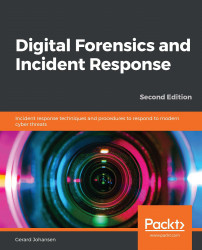The lion's share of this volume addresses the various methods that can be leveraged when investigating an incident. The primary goal of the CSIRT is to utilize methods that follow a systems analysis to address the following key facets of an incident:
- Identifying the scope: In some incidents, the actual scope may not be clearly defined at the initial detection stage. For example, an organization may be contacted by a law enforcement agency that has indicated a C2 server has been taken down. During an analysis of that system, the external IP address of the organization has been identified. From this data point, the scope is first defined as the entire network. From here, the CSIRT would analyze data from the firewall or web proxy, to identify the internal systems that were found to be communicating with the C2 server. From this data, they would narrow...



